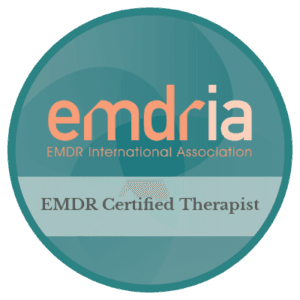 I am often asked to discuss EMDR vs Hypnosis. When it comes to trauma therapy, two powerful modalities often come into the conversation—EMDR (Eye Movement Desensitization and Reprocessing) and clinical hypnotherapy. As someone who is both a certified EMDR therapist and a strong believer in the healing potential of clinical hypnotherapy, I’m often asked about the differences between the two. Which one is better? How do they work? And most importantly, how do you know which is right for you?
I am often asked to discuss EMDR vs Hypnosis. When it comes to trauma therapy, two powerful modalities often come into the conversation—EMDR (Eye Movement Desensitization and Reprocessing) and clinical hypnotherapy. As someone who is both a certified EMDR therapist and a strong believer in the healing potential of clinical hypnotherapy, I’m often asked about the differences between the two. Which one is better? How do they work? And most importantly, how do you know which is right for you?
Most articles about EMDR vs hypnosis tend to be written for mental health professionals and can be difficult for the average person to understand. So, in this article, I’ll break down the basics of both EMDR and hypnosis in easy-to-understand terms, giving you a clearer idea of how each approach can be used to promote healing and well-being.
Purpose of EMDR vs Hypnosis
What Is EMDR?
EMDR therapy is primarily used to help individuals heal from traumatic experiences that continue to have a negative impact on their lives. Whether it’s post-traumatic stress disorder (PTSD), childhood trauma, or more recent emotional wounds, EMDR helps people process difficult memories so they no longer cause distress.
How does it work? The key lies in bilateral stimulation, which can involve things like eye movements, tapping, or sounds that alternate from left to right. This alternating stimulation allows your brain to process traumatic memories and rewire the way they’re stored, leading to reduced emotional distress and long-lasting changes in how you respond to triggering situations.
While the science behind EMDR is still being explored, it’s an evidence-based treatment that’s been shown to help people process trauma and build more positive thought patterns.
What Is Hypnosis?
Clinical hypnotherapy, on the other hand, involves guiding someone into a trance-like state of focused relaxation. In this state, a person becomes more open to suggestions that align with their goals—whether that’s overcoming a habit, managing pain, or processing emotional wounds. While in a hypnotic state, the therapist helps you access deeper layers of your mind, making it easier to uncover and work through the root causes of behaviors or emotional distress.
Hypnotherapy can be especially helpful when it comes to breaking patterns or habits that might feel out of your control—such as smoking, anxiety, or chronic stress. By helping you access unconscious memories and beliefs, it works to clear away mental blocks and pave the way for new, healthier thought patterns.
Key Differences Between EMDR vs Hypnosis
Though both EMDR and hypnosis can be used for healing, they operate very differently in practice. Here are some key differences to help clarify how each works:
Consciousness and State of Mind
The most obvious difference between the two is that EMDR does not involve putting someone into a trance or altered state of consciousness. During EMDR, you remain fully awake and alert while focusing on specific memories, sensations, and emotions. The therapist uses bilateral stimulation to guide your brain through processing these memories, helping to reframe negative thoughts and replace them with more positive ones.
In contrast, hypnosis involves entering a deeply relaxed, trance-like state. While you are still aware of what’s happening, your mind becomes more open to suggestion and can access thoughts and emotions that are often buried in the unconscious. Hypnosis allows the mind to bypass the critical, analytical part and directly engage with deeper beliefs, making it easier to change unhealthy patterns of thinking or behavior.
So when considering EMDR vs Hypnosis, one must assess the treatment goals as well as the client’s anticipated responsiveness to each therapy.
Active vs Passive Participation
EMDR therapy is highly interactive. During a session, the therapist guides you through a structured process where you actively focus on distressing memories while simultaneously engaging in bilateral stimulation. Throughout the session, you are asked to describe your thoughts, emotions, and physical sensations, ensuring you remain grounded and fully engaged in the healing process.
With hypnotherapy, the focus is more on relaxation and allowing the mind to drift into a receptive state. While you’re still aware and engaged, the therapist does most of the guiding, helping you explore unconscious thoughts or emotions and offering positive suggestions to address the issues you’re working on.
EMDR vs Hypnosis – Which Is Better?
A common question I get is, “Which is better—EMDR or hypnosis?” The truth is, neither one is universally better. Both therapies have shown great success, especially in the context of trauma and PTSD treatment, but the right one for you depends on your personal needs, your goals, and how you respond to each approach.
Here are some factors to consider:
- If you prefer a structured, evidence-based approach that keeps you alert and focused throughout the process, EMDR may be the better option for you.
- If you’re drawn to a more relaxed, meditative experience that allows you to access deeper unconscious thoughts, hypnosis might feel like a more natural fit.
Personal Experience with EMDR and Hypnosis
In my practice, I’ve seen clients respond well to both EMDR and hypnotherapy—sometimes even combining the two for deeper healing. For example, some clients initially come to me for trauma-related issues and benefit greatly from EMDR’s structured approach. Later on, we may incorporate hypnotherapy to work on anxiety and some underlying self-esteem issues. Some clients find this approach to be a transformative experience.
It’s important to note that some therapists (myself included) integrate both EMDR and hypnotherapy into trauma and anxiety counseling. The combination of these modalities can offer powerful healing for individuals who need both the focused processing of EMDR and the deep, unconscious exploration made possible through hypnosis.
How to Choose the Right Approach
If you’re unsure which approach might work best for you, here are a few tips:
- Talk to your therapist: A good therapist will help guide you toward the modality that aligns with your goals and comfort level. If you’re curious about one or both approaches, don’t hesitate to ask!
- Consider your goals: If you looking to process specific memories or trauma, EMDR is likely the better fit. If your goal is to uncover deeper layers of unconscious patterns, hypnotherapy might be more effective.
- Be open to both: You don’t have to choose one exclusively. Many people find that trying both EMDR and hypnotherapy at different stages of their healing journey offers the best of both worlds.
Harness the Power of Both Modalities
At the end of the day, both EMDR and hypnotherapy are powerful healing tools that can help you overcome trauma, break negative patterns, and cultivate emotional resilience. The key is finding the approach that resonates with you, aligns with your goals, and supports your healing process.
Whether you’re leaning toward EMDR’s structured approach or are intrigued by the deeper exploration offered through hypnosis, both options provide pathways to healing. If you’re ready to take the next step, reach out and schedule a consultation—we’re here to support you every step of the way.
If you’re in the Boca Raton area and would like to explore either EMDR or clinical hypnotherapy (or a combination of the two), I’d be happy to answer any questions you have. At the Morgan Center for Counseling & Wellbeing, we offer personalized therapy options to help you heal from trauma, manage anxiety, and create lasting change in your life. Each person’s journey is unique, and we’re here to help you find the approach that works best for you.
Jody Morgan, LCSW, CCTP is a licensed clinical social worker practicing in Boca Raton, Florida. He is EMDR Certified and is an Advanced Clinical Hypnotherapist. He specializes in working with adults and seniors who struggle with anxiety, depression, PTSD, and past trauma.
Facebook | LinkedIn | X | BlueSky















